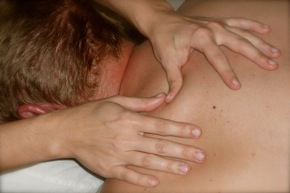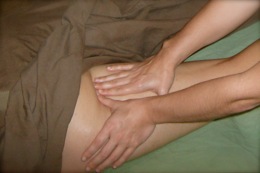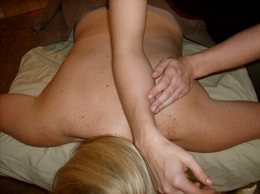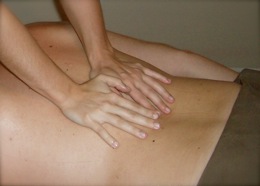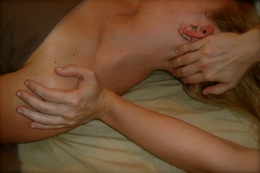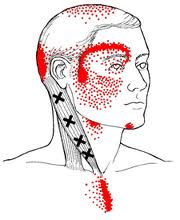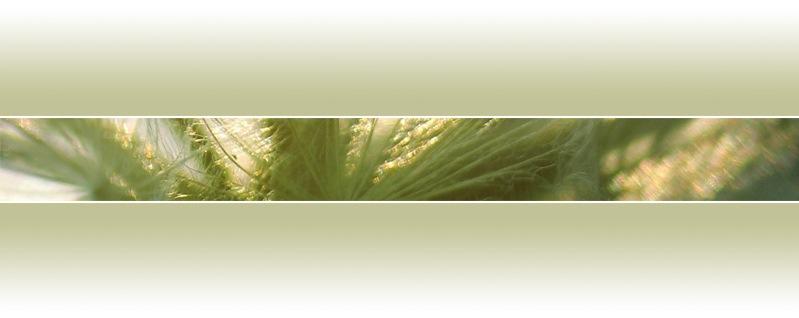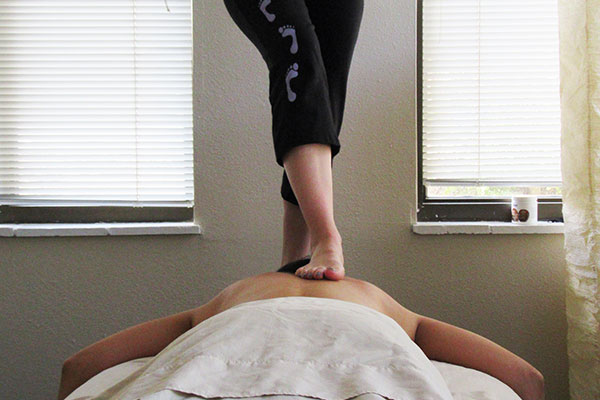Swedish
This is the most well-known massage modality. Using both long, gliding strokes and shorter, more energetic strokes, a Swedish massage is intended to warm, loosen and stretch muscle fibers and fascia. It also promotes blood and lymph circulation. The pressure used can range from light to moderate to firm. The massage can be soothing and relaxing, or it can be invigorating and energizing, depending on the client's needs and desires. Some short-term effects of a Swedish massage include temporarily lowered blood pressure, increased oxygen capacity in the blood, increased dopamine production, reduction of fascial adhesions, stimulation of the parasympathetic nervous system, and general relaxation, stress reduction, and mood elevation.
Myofascial
The most abundant type of tissue in the body is connective tissue, or fascia. Layer by layer, from superficial to deep, fascia works like a plastic wrapper around and between the structures of the body, protecting and supporting them. Myofascial release is usually done without lotion. The massage therapist works slowly and deliberately through the layers of fascia to facilitate, rather than force, the stretch and mobilization of the connective tissue. Passive stretching and traction, especially of the head and limbs, are also highly effective techniques to loosen up restricted fascia. Myofascial release can alleviate pain and stiffness, increase range of motion, and decrease ischemia and muscle tension. It is also a great modality to employ before engaging in deeper work.
Deep Tissue
While not usually considered a modality in its own right, Deep Tissue work is most beneficial when applied to specific areas where a client feels knots, tight bands, consistent muscle tension or chronic pain. The intention is to release long-term holding patterns in the musculoskeletal system, to begin breaking up knots in the muscle tissue, to warm and loosen tight muscle bands, and to work the deeper layers of soft tissue that a traditional Swedish massage will not reach. The pressure applied can be moderate, firm, or deep, and should always be tolerable. Therapeutic Deep Tissue work may feel like a “good hurt,” and can result in superficial, localized soreness for a day or two, but it doesn’t need to feel exquisitely painful during the massage in order to be effective.
Neuromuscular*
Neuromuscular Therapy, or Trigger Point Therapy, is another therapeutic, site-specific type of massage intended to alleviate chronic pain and muscle tension through the location and treatment of Trigger Points and Tender Points. A Trigger Point is a hypersensitive spot within a tight muscle that, when activated (compressed through movement or applied pressure), elicits local pain or tenderness, and sends a referred pain pattern to another area of the body as well. (A Tender Point is simply a Trigger Point without the referred pain pattern.) The sensation may feel like a dull ache, a sharp, stabbing pain, a strange feeling of heat or cold, or even like poison flowing through the body. Trigger Points in the neck and shoulder muscles, for example, are common causes of headaches through their referred pain patterns. (In the diagram on the right, the black X's indicate typical Trigger Points in the Sternocleidomastoid, or SCM, muscle. Some common referred pain patterns are represented by the red dots.)
A Neuromuscular massage will begin with basic Swedish strokes to warm and loosen tissue, move into deeper localized work to prepare the tissue and clear out excess blood and lymph, and then the massage therapist will attempt to locate and release one or more Trigger Points in the affected area. The treatment will involve two key steps: loosening the Trigger Point itself through sustained pressure, and allowing fresh blood to flow into the area by releasing the pressure. This two-step process will be repeated for a few moments at a time, throughout the massage, to avoid overworking the area or aggravating the tissue too much. The ideal result will be a decrease in the range of the referred pain pattern, its intensity, or both. As with Deep Tissue work, Neuromuscular Therapy is not necessarily a pleasant, soothing massage; however, it should never be a painful experience, and it can be enormously beneficial by providing long-term pain relief.
Note: It is important to drink extra water after a massage, to flush out any toxins released from hypertonic muscles or restricted soft tissue, but it is even more crucial to do so after Deep Tissue or Neuromuscular work.
* I am certified in Neuromuscular Therapy (NMT). (back to top)
Sports
Sports Massage is often divided into pre-event and post-event massage. Both types target specific muscles or muscle groups that an athlete will use, or has just used, during an athletic event. This type of massage involves more energetic strokes and stretches, as well as rocking or jostling of the trunk and/or limbs in order to loosen muscle fibers. A pre-event Sports massage is geared toward preventing injury and warming up an athlete’s tissues in preparation for an event, while a post-event Sports massage is more focused on dispersing lactic acid, stretching to retain muscle fiber flexibility, and preventing muscle soreness. A Sports massage is usually short, ranging from 10 to 30 minutes. This modality can often be done through clothing, and it is most effective when done just before or after the athletic event (within an hour or so).
There are several types of massage, or modalities. Here are a few of my favorites. These are the simplest and most effective modalities for virtually anybody. It's easy to incorporate more than one modality into one massage session, and doing so can be extra-beneficial for the client.
Tori Swilley
Massage
MASSAGE
Ashiatsu
Ashiatsu DeepFeet Bar Therapy is a barefoot massage technique in which the therapist delivers deep, broad, consistent pressure while utilizing their feet and body weight. Working with gravity instead of against it, Ashiatsu therapists are able to provide an effective therapeutic massage without causing pain or discomfort to themselves or the receiving client.
Cream or oil is applied to the client's body, making this deep therapeutic massage fluid and relaxing. Parallel bars are used above the massage table for balance, support and client safety.
In the Japenese language, “Ashi” translates to foot and “Atsu” into pressure.

